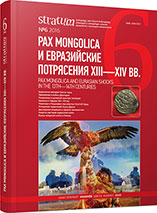Следы Великого Шелкового пути, или о технологии монетного литья в византийском Херсоне
Traces of the Silk Road, or about technology of monetary molding in the Byzantine Cherson
Author(s): Mikhail M. ChorefSubject(s): History, Archaeology, Economic history, Middle Ages, 6th to 12th Centuries
Published by: Издательский дом Stratum, Университет «Высшая антропологическая школа»
Keywords: Byzantium; Taurica; Cherson; numismatics; molding of coins; Chinese technologies
Summary/Abstract: The author discusses controversial issues of minting technology and organization of cast bronze emissions in Byzantine Cherson. A study of molds and coins produced with their help, it was found that the monetary emission in Cherson employed Chinese mass casting technology — the so-called «money tree». This technology was not known to the Roman Empire and its neighboring countries. It could be borrowed as a result of indirect contacts between Eurasian peoples involved in trade exchanges along the Silk Road. This technology allowed to organize large-scale emissions. Transition to this new technology indicates to the high demand for the means of payment in the early medieval Taurica, which, in turn, assures us in its high rate of further sustained development.
Journal: Stratum plus. Археология и культурная антропология
- Issue Year: 2016
- Issue No: 6
- Page Range: 319-327
- Page Count: 9
- Language: Russian
- Content File-PDF

